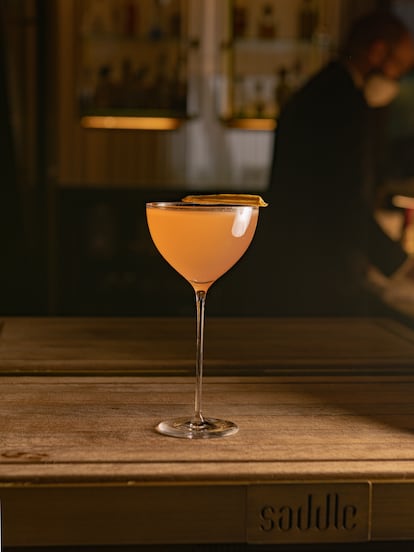The future of cocktails: Soulless or avant-garde?
Impeccable drinks served in seconds, pre-mixed cocktails are becoming a reality, even if some might miss the Tom Cruise-style flair

It probably sounds familiar. You arrive at a cocktail bar, browse the menu, choose the specialty you fancy and get ready to enjoy... only, by the time the cocktail arrives, you’re dry-mouthed and thinking, next time, you might order a drink you don’t have to wait half an hour for.
Now batching, or pre-mixing, has arrived to address the problem. It scales up the offer of most establishments, allowing the drinks to be served fast, “in the same way as it is done in haute cuisine, where the preliminary work allows the best available techniques to be applied,” says Abraham Rivera, journalist and co-founder of the Top Cocktails Bars guide, adding that cocktail bars such as ISA at the Four Seasons Hotel and Angelita in Madrid are spearheading the trend.
In fact, all cocktails served for the past two years at Angelita’s have been batched. “The reasons behind it are simple: to keep the flavor pure as the ingredients do not oxidize or lose their properties; to increase customer satisfaction by reducing service times, and to standardize the process so as not to depend on the intuition of each bartender,” says Mario Villalón, co-owner of Angelita along with his brother David, one of Madrid’s great sommeliers and an absolute benchmark in Spain for cocktail avant-garde. “In our case, it used to take us between 18 and 25 minutes to serve a cocktail from the moment the client walked in the door, and there was always an element of uncertainty as to how it would turn out,” he acknowledges. “Now, we are not only more efficient in both these aspects, but we can interact in a more relaxed fashion with the client, and we earn 10% more from higher sales volume.”
Of course, there are those who believe the batching trend means a loss of ritual ― known as flair as practiced by Tom Cruise in the 1988 movie Cocktail ― and consider it to be a soulless proposal. “There is a generational clash,” admits Gabriel Dávila, who runs Madrid’s Saddle bar, where he dares to batch timeless favorites such as the Dry Martini and the Negroni. Dávila also draws a parallel with haute cuisine. “The value of the work before the food is served is understood, letting a sauce rest for hours or applying an avant-garde technique in search of a unique flavor,” he says. “No one could be blamed for not doing it on the spot.” He also argues that batching allows his team to focus on other important issues such as the temperature of the cocktail or working with the best-carved ice so that the presentation is impeccable.
According to Alberto Villarroel, founder of Santos y Desamparados, in central Madrid, “as soon as you travel around, you realize the future could not be otherwise. They [the detractors] remind me of those who still add cucumber to gin and tonic. When cocktails on tap start to spread, they’re going to be besides themselves.” On a more serious note, he adds, “there is an enormous reduction in waste. It is undoubtedly the most sustainable working method.”
Sign up for our weekly newsletter to get more English-language news coverage from EL PAÍS USA Edition
Tu suscripción se está usando en otro dispositivo
¿Quieres añadir otro usuario a tu suscripción?
Si continúas leyendo en este dispositivo, no se podrá leer en el otro.
FlechaTu suscripción se está usando en otro dispositivo y solo puedes acceder a EL PAÍS desde un dispositivo a la vez.
Si quieres compartir tu cuenta, cambia tu suscripción a la modalidad Premium, así podrás añadir otro usuario. Cada uno accederá con su propia cuenta de email, lo que os permitirá personalizar vuestra experiencia en EL PAÍS.
¿Tienes una suscripción de empresa? Accede aquí para contratar más cuentas.
En el caso de no saber quién está usando tu cuenta, te recomendamos cambiar tu contraseña aquí.
Si decides continuar compartiendo tu cuenta, este mensaje se mostrará en tu dispositivo y en el de la otra persona que está usando tu cuenta de forma indefinida, afectando a tu experiencia de lectura. Puedes consultar aquí los términos y condiciones de la suscripción digital.
More information
Archived In
Últimas noticias
Most viewed
- Reinhard Genzel, Nobel laureate in physics: ‘One-minute videos will never give you the truth’
- Oona Chaplin: ‘I told James Cameron that I was living in a treehouse and starting a permaculture project with a friend’
- Pablo Escobar’s hippos: A serious environmental problem, 40 years on
- Why we lost the habit of sleeping in two segments and how that changed our sense of time
- Charles Dubouloz, mountaineering star, retires at 36 with a farewell tour inspired by Walter Bonatti










































